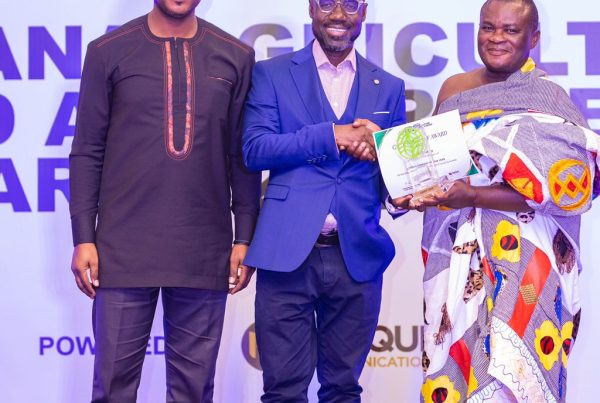Brought to us by Mark Davies – market information obsessed anthropologist & technologist (and incidentally the founder/CEO of Esoko).
 Recently at a UNECA workshop in Addis I was challenged by Vincent Fautrel of CTA (the Centre for Agriculture and Rural Cooperation ACP-EU) about Esoko’s strategy. I had been talking about the new products and services that we were planning to introduce to serve businesses and organizations, and Vincent wondered whether or not Esoko would continue to serve the needs of smallholder farmers. It’s a valid question. The reason I think it’s worth writing about here is because I think buried within that question are key issues about market demand, product vision and the evolution of MIS, so I wanted to pull out a few threads and pick them up here.
Recently at a UNECA workshop in Addis I was challenged by Vincent Fautrel of CTA (the Centre for Agriculture and Rural Cooperation ACP-EU) about Esoko’s strategy. I had been talking about the new products and services that we were planning to introduce to serve businesses and organizations, and Vincent wondered whether or not Esoko would continue to serve the needs of smallholder farmers. It’s a valid question. The reason I think it’s worth writing about here is because I think buried within that question are key issues about market demand, product vision and the evolution of MIS, so I wanted to pull out a few threads and pick them up here.
Vincent was also surprised to hear me talk about this as an ‘industry’, and questioned the validity of that term. But I’m convinced more than ever that there is an industry of information products serving agricultural communities expanding quickly in Africa. It’s exciting, confusing and we’ve got very few points of reference to guide us as we navigate through this period of innovation and disruption.
So why does the community still remain so poorly documented, and so clearly misunderstood? Even by those of us practicing within it? I would suggest there are two areas that are confusing us and we need to think big about both: history and technology.
The history of MIS to most practitioners has been one of governments sending out enumerators to collect prices. This has mostly been done on paper, by fax and over the phone. The data is not particularly time sensitive, and can take weeks to get into a ‘central repository’. The latter may be an excel sheet or filing cabinet in the ministry. The customer here is really government, seeking production and price statistics for planning, policy and food security. A price that is a week old is almost non-commercial by definition. So MIS to date have mostly been run (in Africa) by public organizations with little focus or accountability to the market itself. The content itself is rarely seen or used by farmers or traders, and if it is, then mostly through radio or newspapers, where there is little opportunity to interact or respond to the content itself – key elements that go to ensure both the accuracy of the data and the excitement and motivation of those collecting it.
The argument goes that only the public sector can be trusted to collect prices and disseminate this fairly and justly to the populace and that no private company can be trusted… both in terms of motivation and in terms of accuracy. I think they are fair questions, but in my five years now of talking to traders, the very last people that they trust for commercial information is government. So there’s a disconnect. There’s a structural problem of relevance and accountability that’s just not built in. And the conceit of the governing mostly keeps them from asking the tough questions. Notable exceptions exist. Some include Rwanda, Sudan and Kenya who are beginning to show real commitment. But most public MIS systems are in decline or have vanished across the continent as budgets, votes, excitement, and impact seem not to materialize. It’s this history that we’ve inherited, and the community across Africa has a healthy dose of skepticism and cynicism in pushing more money into old models when the track record in African agric seems so poor. Prices haven’t really seemed to help farmers. Of course not! They were wrong and inaccessible! We’re seeing something very different in Ghana and are launching key studies this year with NYU and IFPRI and Cirad to prove it. We shouldn’t be defined by our history.
The second key point, and where both opportunity and more confusion arises, is the advent of promising and disruptive technologies. A number of individuals, organizations, projects and commercial businesses have recognized (for some years now) that placing a terminal into a large number of pockets that can accept low cost, easily customizable, storable and transferable data messages can disrupt the existing status quo. So for a few years we’ve seen initiatives emerge amongst technology enthusiasts to try and improve the way information is delivered. Notably Shaun Ferris’ work with Foodnet in Uganda and Daniel Anerose with Manobi in Senegal were some of the first innovations in mobile-based delivery of content. That opportunity is now clearly understood by most of us, but we’re still in a phase of working out who is the best to develop those technologies. They’re not as fast, cheap and easy as we all tend to think when we start, so projects, NGOs, and businesses all attempt to build their own software. This was the same with word processing in the 70s. But technologists emerge who understand the industry and realize there’s a win-win for all in building tools that everyone can use, and are happy with 80% of the features they thought they needed.
And that’s exactly where we are now. Hold on for the ride.

